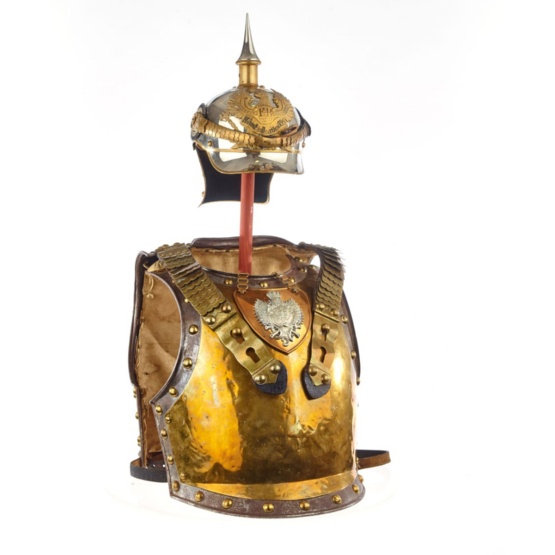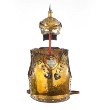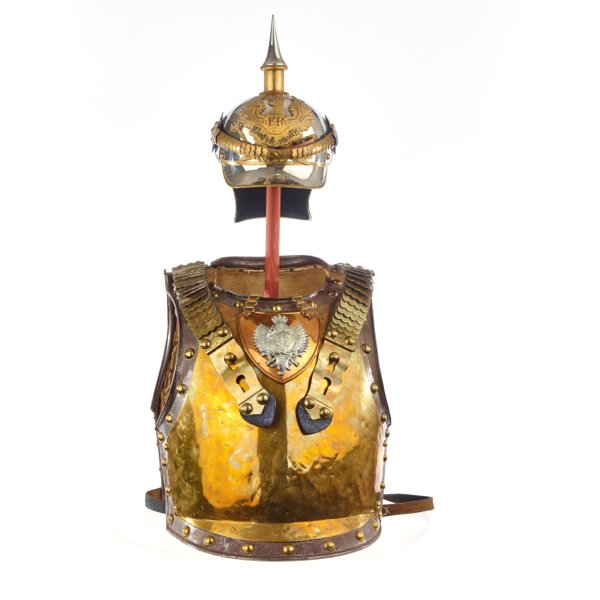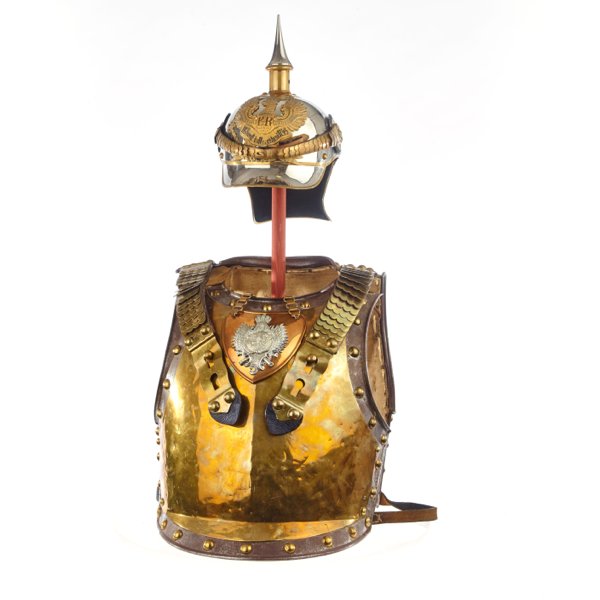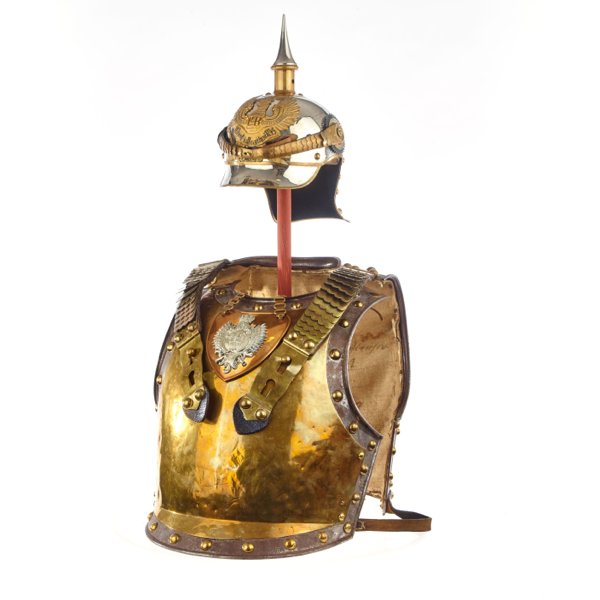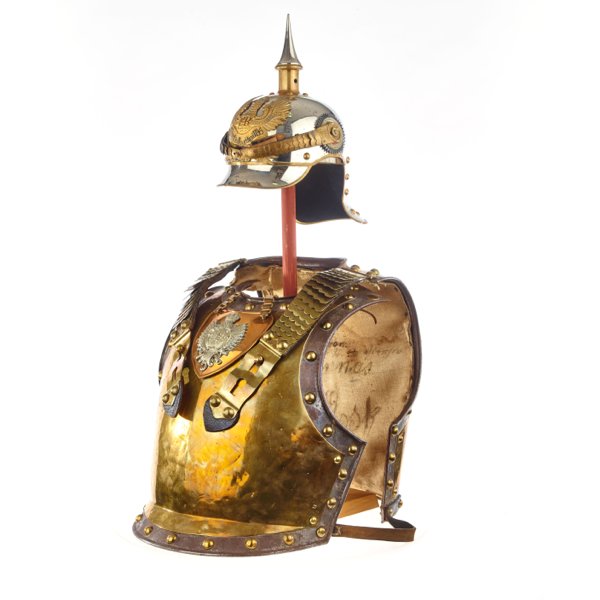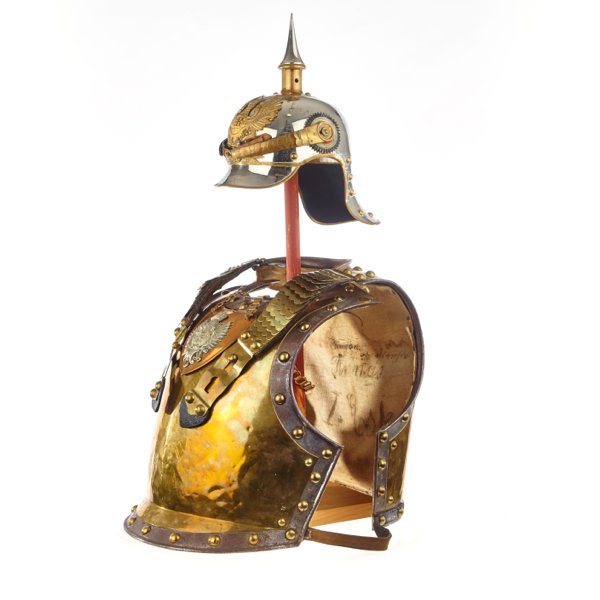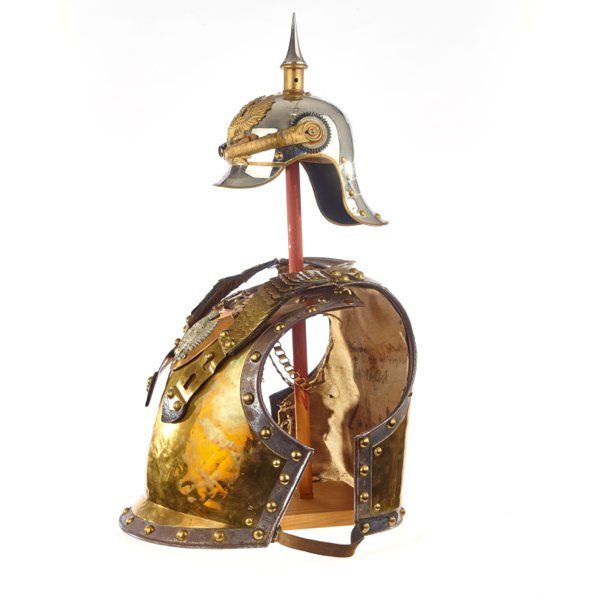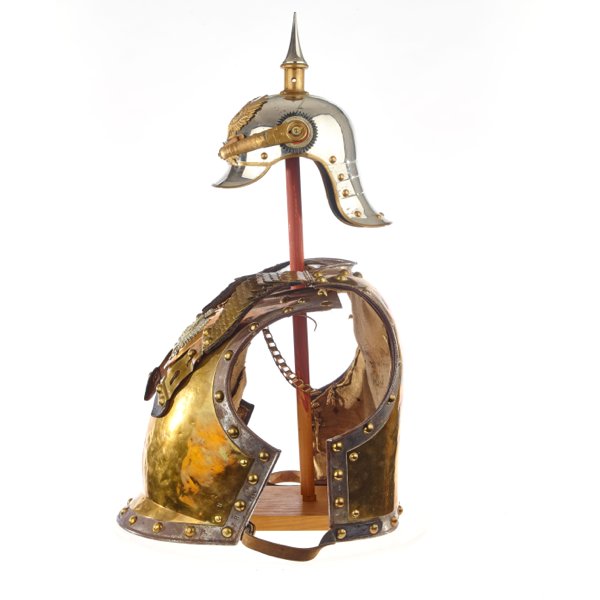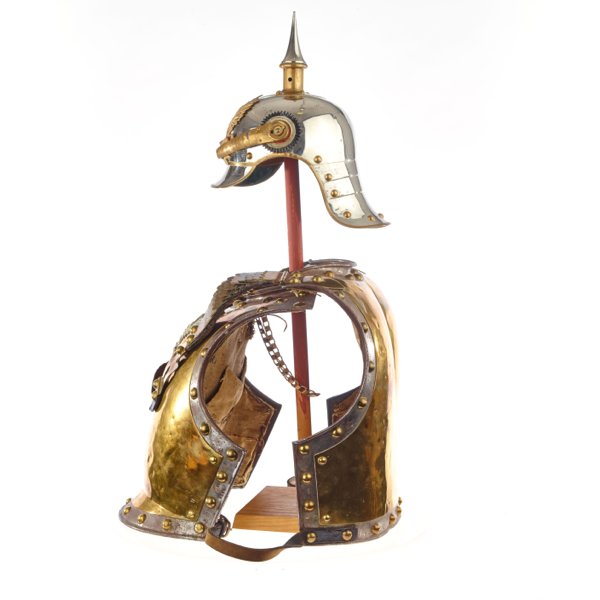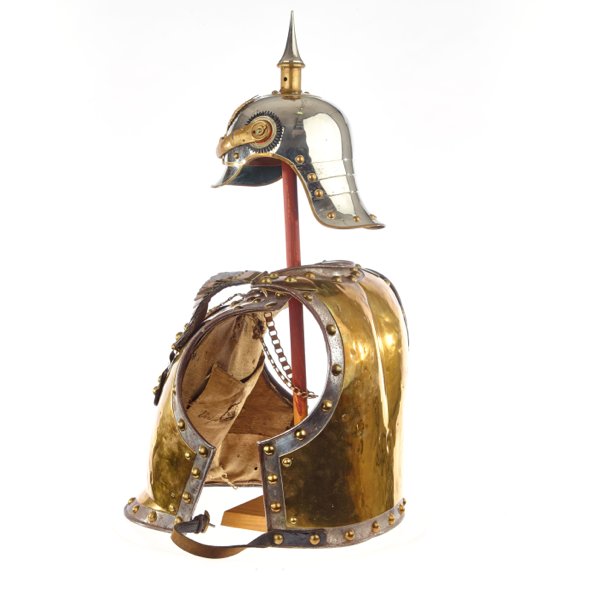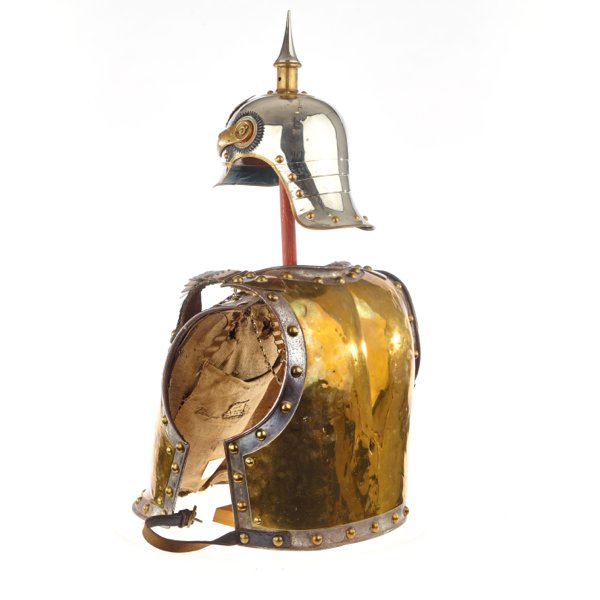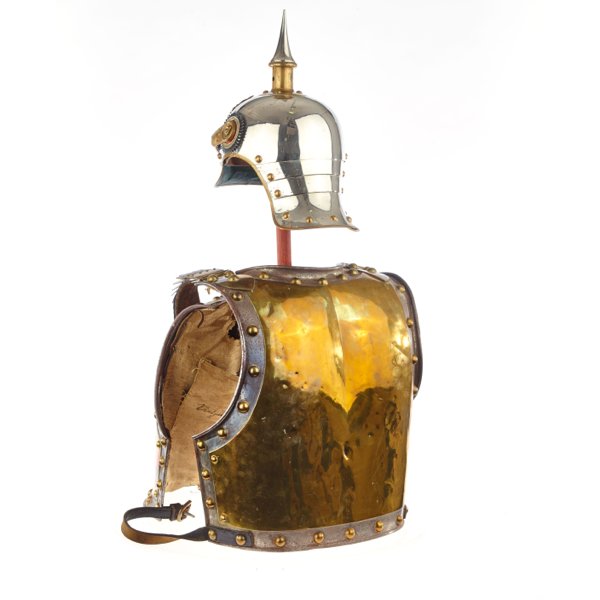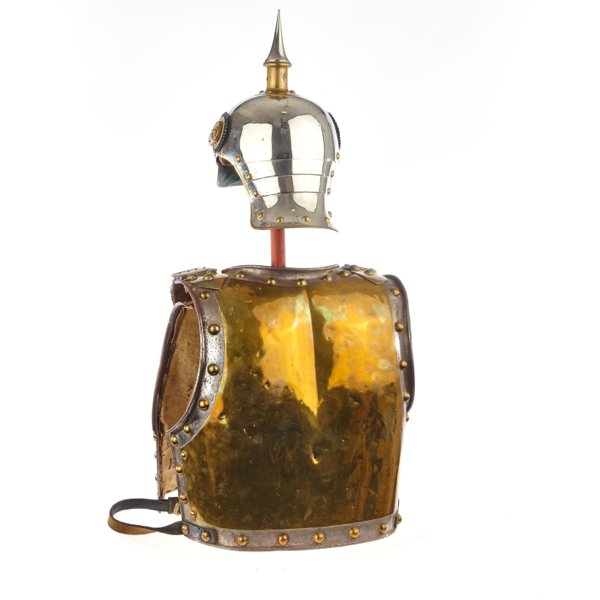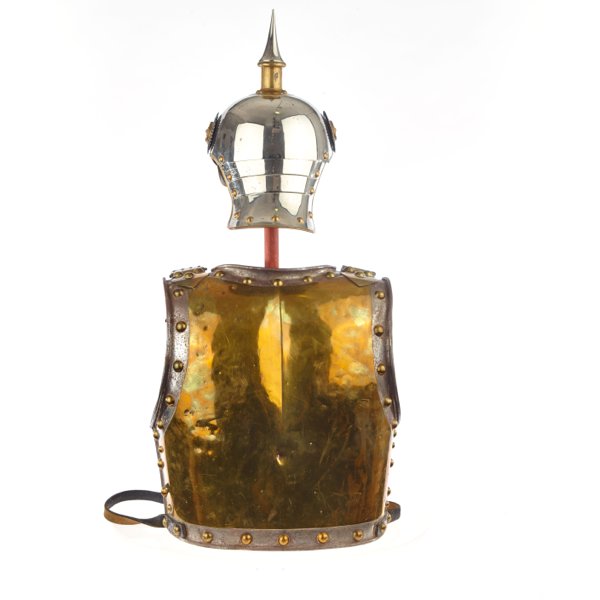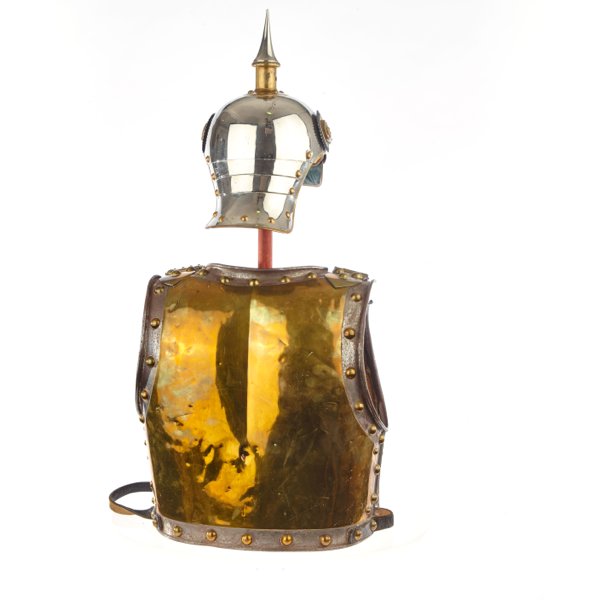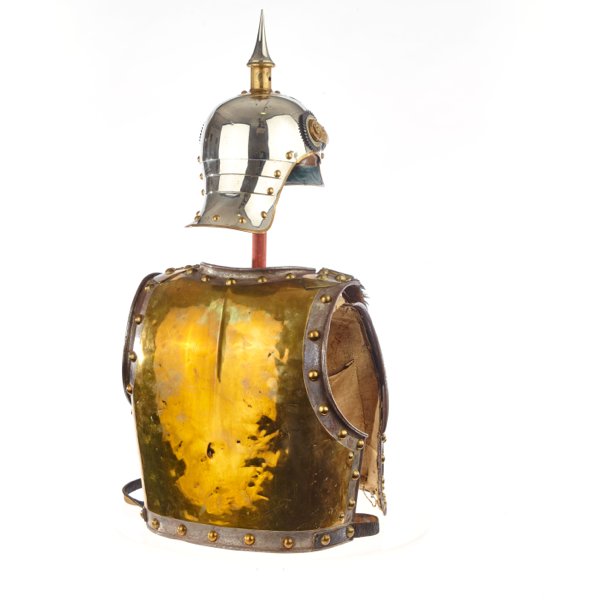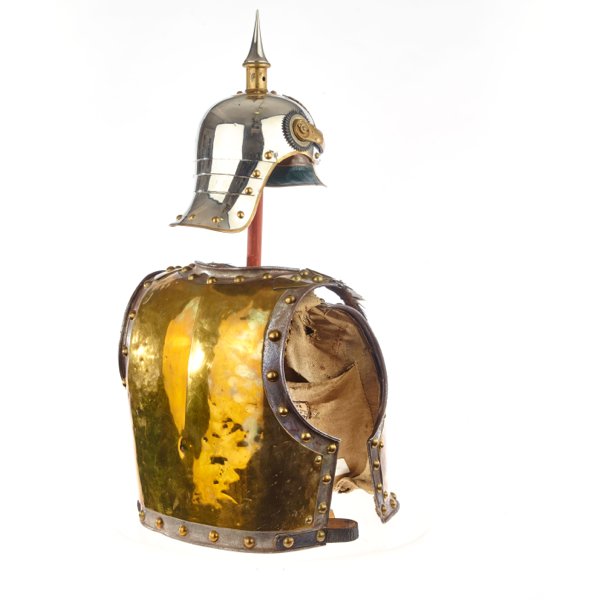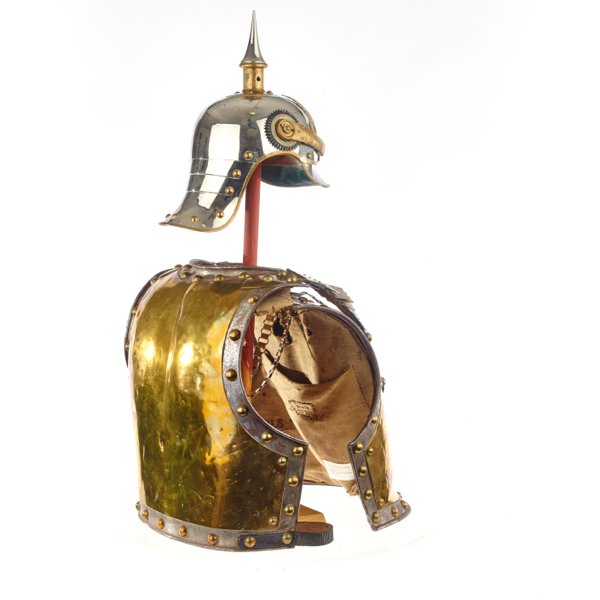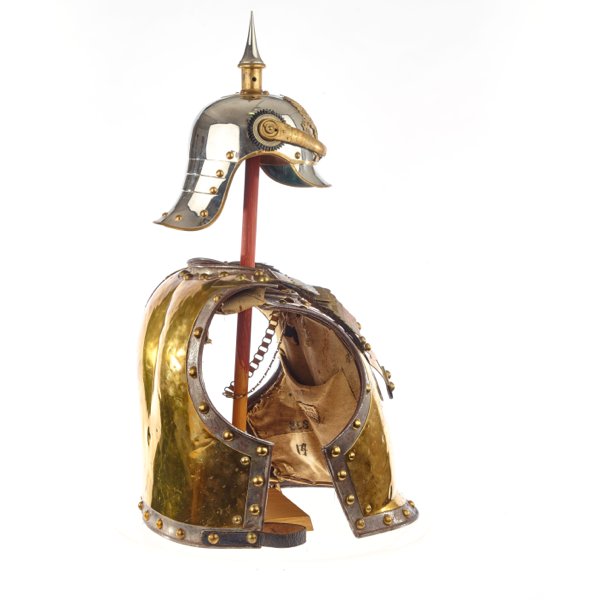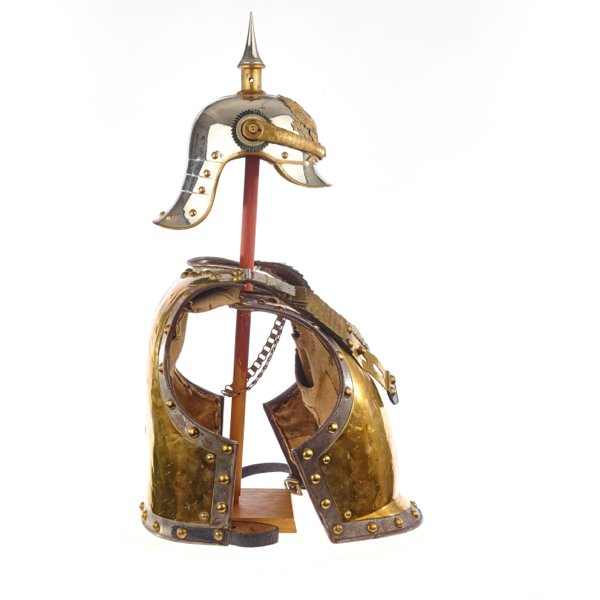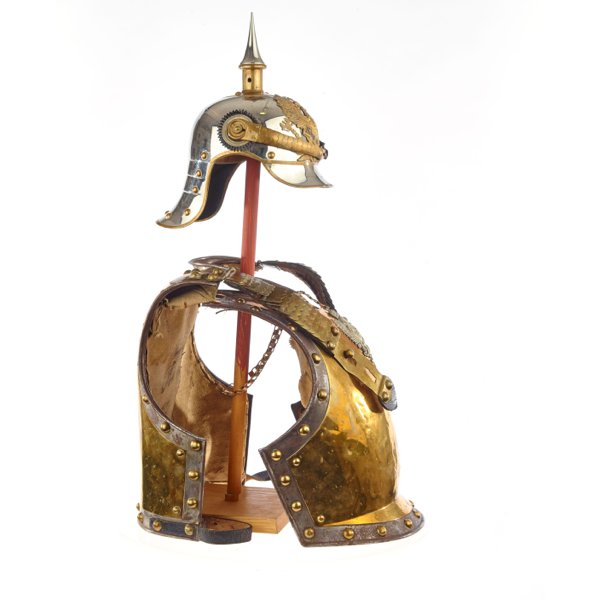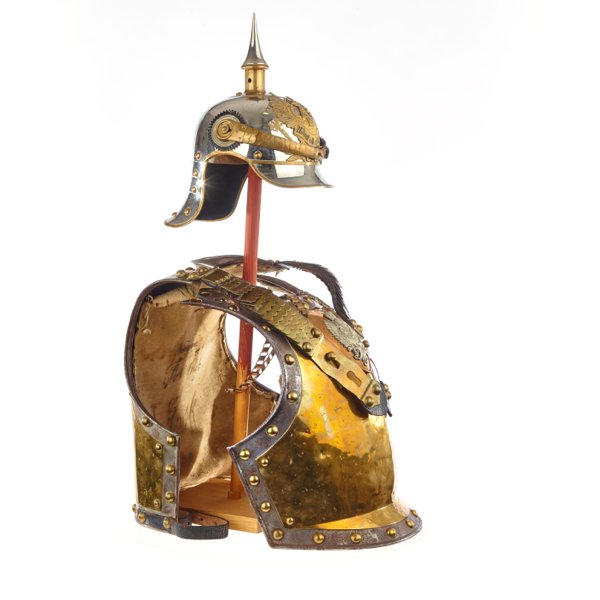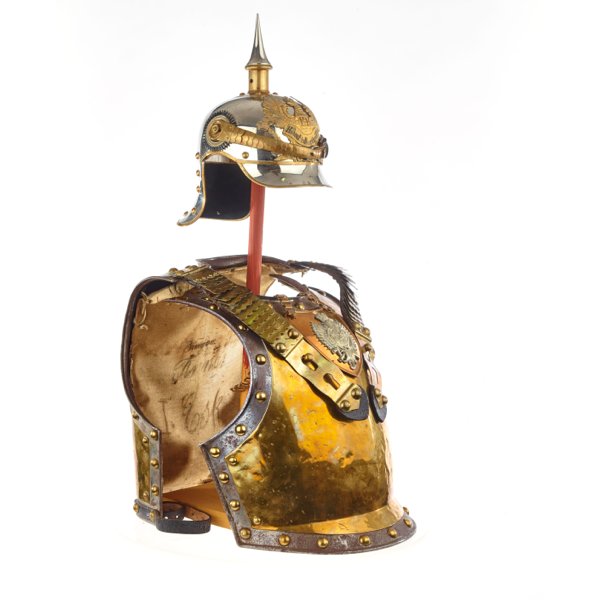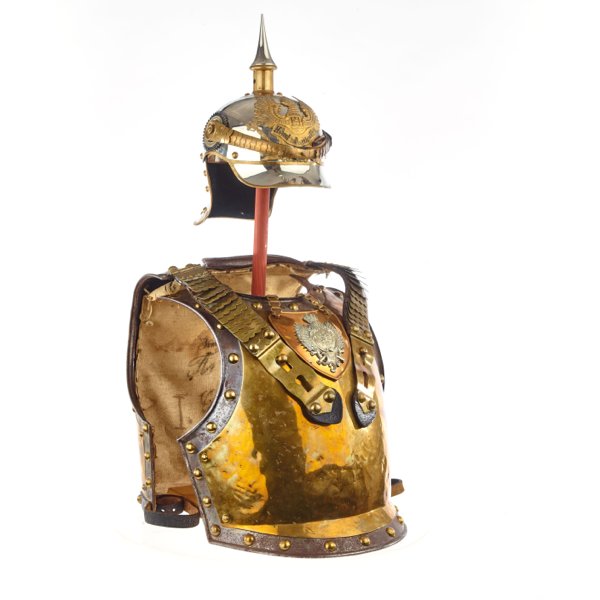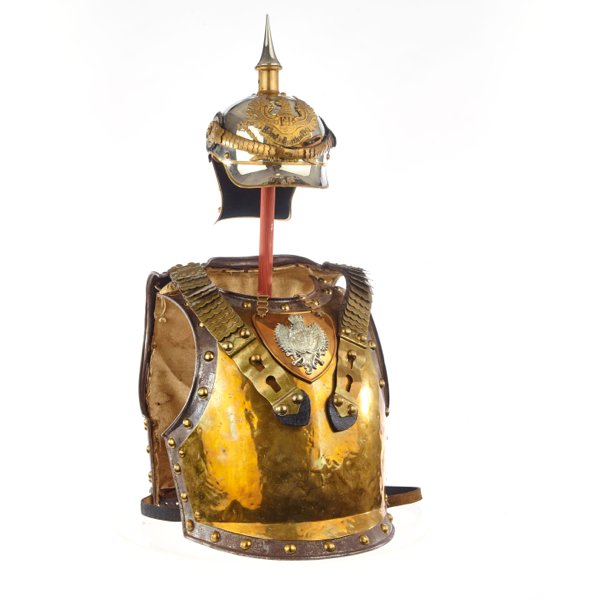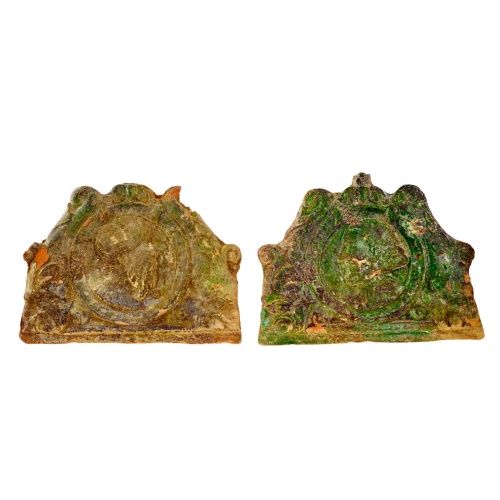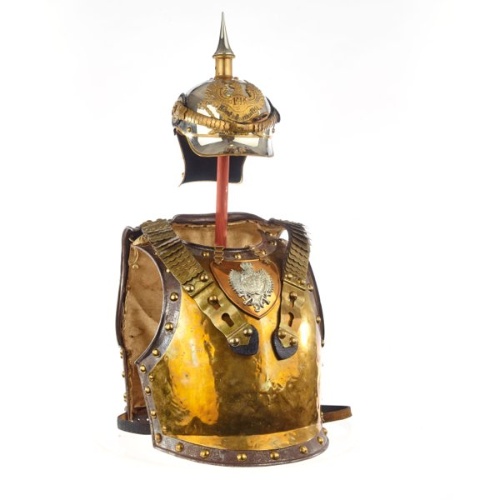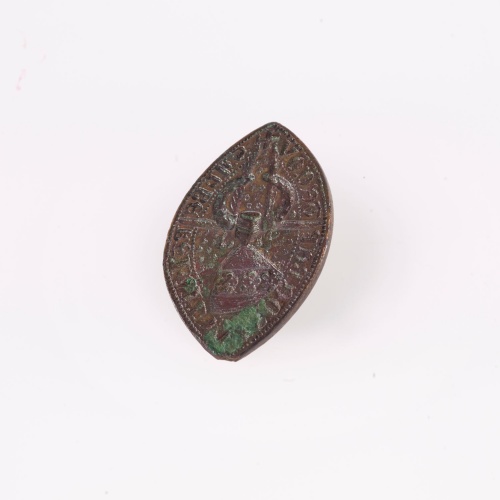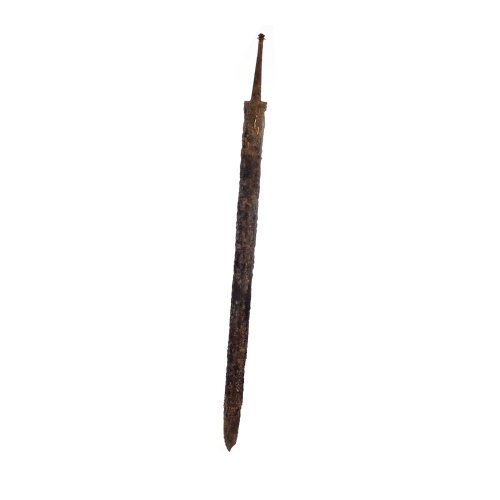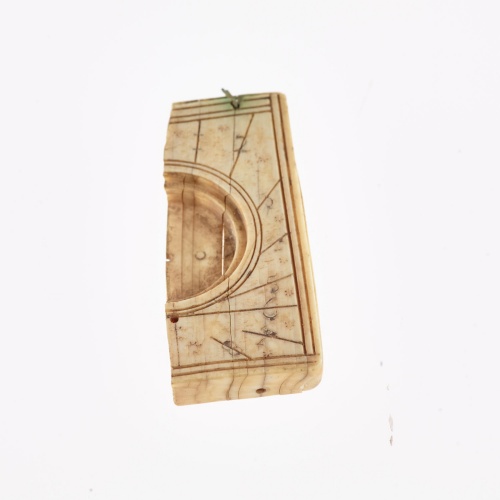Cuirass and helmet worn by cuirassiers from Pasewalk
- brass and steel plate, around 1840
(cuirass on loan by: Wehrgeschichtliches Museum Rastatt; helmet on loan by: Theo Haase)
The cuirass was worn during parades. Its insides are lined with a coarse, mixed linen fabric and its sides are closed using leather straps. Medal clasps, knight's crosses and other insignia, sometimes just strips, were attached to the holes on the shackle of the left epaulette. Another option was to wear the clasps dangling from eyelets soldered to the cuirass on the same level as the shackle.
The helmet is silver coloured and adorned with the lettering 'Battle of Hohenfriedberg 1745'. One of Germany's most famous military parades is named after this battle, which took place near Hohenfriedberg by Striegau. The name commemorates the Prussian victory over the allied Austrians and Saxons on 4 June 1745 during the Second Silesian War.
The Thirty Years' War (1618-1648) initially left Pomerania unscathed, but from 1627 onward the region was forced to accept occupation by the imperial forces. It became a tennis ball in the laps of the powers and was soon the region most devastated and lastingly depopulated in all of Germany. Pasewalk falls to the Prussians in 1720, at the end of the Nordic War. A garrison is then stationed there, and the city's fortunes improve continuously. The billeting of troops and the supply of the officer corps provide a steady source of income. The skirmishes of 12 August 1914 in Halen (Belgium), which enter the annals of history as the Battle of the Silver Helmets, occasion the final great cavalry charge involving cuirassiers from Pasewalk. Known in Flemish as the Slag der Zilveren Helmen, it marks the strategic turning point in First World War battlefield tactics and is the last time that horses were used in a combat role in the theatre of war.
Halen and Pasewalk are twinned, a process initiated by the historical and cuirassier societies in both cities over ten years ago.
Text: A.H.
